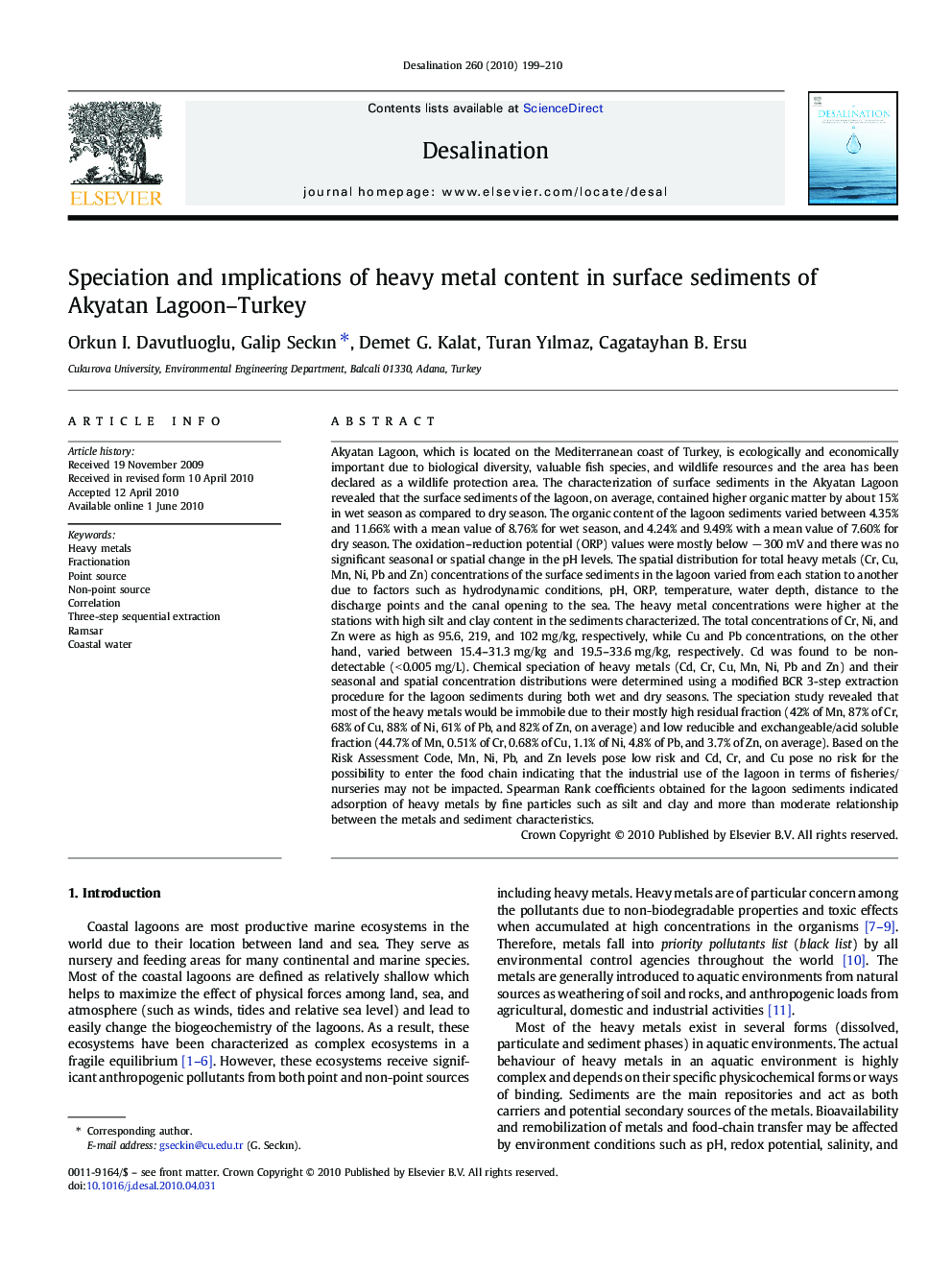| کد مقاله | کد نشریه | سال انتشار | مقاله انگلیسی | نسخه تمام متن |
|---|---|---|---|---|
| 625666 | 1455431 | 2010 | 12 صفحه PDF | دانلود رایگان |

Akyatan Lagoon, which is located on the Mediterranean coast of Turkey, is ecologically and economically important due to biological diversity, valuable fish species, and wildlife resources and the area has been declared as a wildlife protection area. The characterization of surface sediments in the Akyatan Lagoon revealed that the surface sediments of the lagoon, on average, contained higher organic matter by about 15% in wet season as compared to dry season. The organic content of the lagoon sediments varied between 4.35% and 11.66% with a mean value of 8.76% for wet season, and 4.24% and 9.49% with a mean value of 7.60% for dry season. The oxidation–reduction potential (ORP) values were mostly below − 300 mV and there was no significant seasonal or spatial change in the pH levels. The spatial distribution for total heavy metals (Cr, Cu, Mn, Ni, Pb and Zn) concentrations of the surface sediments in the lagoon varied from each station to another due to factors such as hydrodynamic conditions, pH, ORP, temperature, water depth, distance to the discharge points and the canal opening to the sea. The heavy metal concentrations were higher at the stations with high silt and clay content in the sediments characterized. The total concentrations of Cr, Ni, and Zn were as high as 95.6, 219, and 102 mg/kg, respectively, while Cu and Pb concentrations, on the other hand, varied between 15.4–31.3 mg/kg and 19.5–33.6 mg/kg, respectively. Cd was found to be non-detectable (< 0.005 mg/L). Chemical speciation of heavy metals (Cd, Cr, Cu, Mn, Ni, Pb and Zn) and their seasonal and spatial concentration distributions were determined using a modified BCR 3-step extraction procedure for the lagoon sediments during both wet and dry seasons. The speciation study revealed that most of the heavy metals would be immobile due to their mostly high residual fraction (42% of Mn, 87% of Cr, 68% of Cu, 88% of Ni, 61% of Pb, and 82% of Zn, on average) and low reducible and exchangeable/acid soluble fraction (44.7% of Mn, 0.51% of Cr, 0.68% of Cu, 1.1% of Ni, 4.8% of Pb, and 3.7% of Zn, on average). Based on the Risk Assessment Code, Mn, Ni, Pb, and Zn levels pose low risk and Cd, Cr, and Cu pose no risk for the possibility to enter the food chain indicating that the industrial use of the lagoon in terms of fisheries/nurseries may not be impacted. Spearman Rank coefficients obtained for the lagoon sediments indicated adsorption of heavy metals by fine particles such as silt and clay and more than moderate relationship between the metals and sediment characteristics.
Journal: Desalination - Volume 260, Issues 1–3, 30 September 2010, Pages 199–210